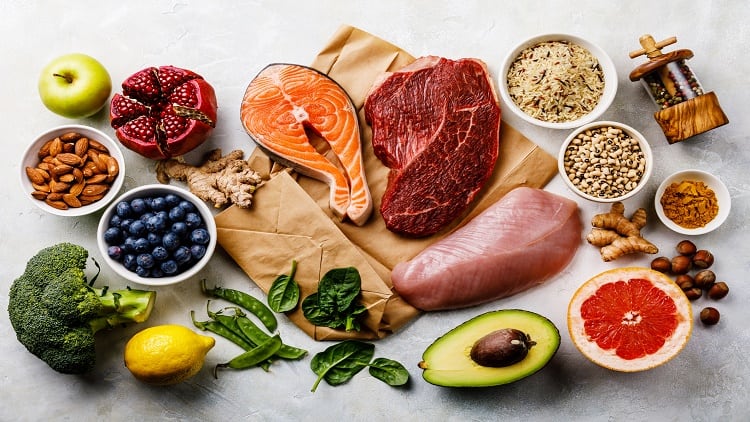Increasing intake of potassium has been suggested to reduce blood pressure, decrease CVD risk, have beneficial effects on bone-mineral density, which can attenuate the negative consequences associated with consuming high amounts of sodium.
According to a study conducted in Australia, researchers found the sodium:potassium intake ratio (Na:K) were also higher than ideal for adults.
The findings were published in the journal, Nutrients.
Methods
Participants (n= 6169) were recruited from the state of Victoria in Australia. A self-reported survey was used to collect data on demographics, anthropometry, and supplement use.
Urine was collected over a 24-hour period. The sodium, potassium and creatinine concentrations were then measured.
A 24-hour dietary recall via telephone was used to collect information on dietary sources of potassium.
Mean urinary potassium
The study reported that mean potassium excretion was significantly higher in males compared to females (p<0.001).
The diet recall data also found that males had significantly higher values for potassium compared to females.
Researchers said this may be due to the larger amount of food (energy) males consumed within a 24-hour period, compared to females.
The younger age group (18–34 year olds) also had a significantly higher urinary Na:K compared to older age group (55–65 year olds, p<0.03).
Na:K relationship
While many countries have implemented national strategies to lower salt intake, even within Australia whose goal is to cut average salt intake by 30% by 2025, researchers stressed potassium intake is not often a focus of these strategies.
Both potassium and sodium have an effect on blood pressure and should not be considered in isolation for their effects on health. An excess of sodium and a deficit in potassium increases the risk of hypertension and CVD.
It has also been demonstrated that high Na:K ratio is more strongly related to CVD risk compared to sodium or potassium in isolation.
Researchers said the ideal ratio should be 1.0. In this study, the Na:K by urine excretion was 1.9, which greatly increases an individual’s risk of CVD.
Food sources of potassium
The top five sources of potassium intake in Australian adults were found to be potatoes, dairy milk, dishes where cereal is the main ingredient (e.g., pizza, sandwiches, burgers, savoury pasta, rice/noodle dishes), coffee and coffee substitutes and tropical and subtropical fruits.
Researchers expressed that while potatoes contain one of the highest amounts of potassium, often cooking methods were less than ideal, such as cooking with oil and fat, frying and adding salt, which may influence its nutritional value in the diet.
Other opportunities to increase potassium intake could be to substitute white bread with wholemeal bread, as wholemeal bread can contain up to 70% more potassium.
Researchers highlighted the need to create awareness of increasing high potassium-containing unprocessed foods consumption. They stressed that the population must have the knowledge and cooking skills to support this. This would then have an impact in improving Na:K.
Strengths and limitations
Strengths of this study included an objective measure of potassium excretion (24-h urine collection), and validated methodology such as the diet recall.
However, there were some limitations. The single 24-h diet recall, and 24-h urine collection collected may not be reflective of participants’ usual dietary intake or eating pattern. Researchers explained a single collection is adequate to examine the diet of large populations and reduce a participants’ burden.
The data in this study were also not adjusted for non-urinary losses. In the study, potassium estimates were lower in the urinary excretion data compared to the 24-h diet recall data.
It has been reported that most ingested potassium is excreted in urine, however, 10 to 20% can be excreted in faeces and sweat.
“It is difficult to estimate the amount of potassium lost via non-urinary pathways, as it can depend on the diet, with a higher intake of fibre resulting in a higher loss of potassium in the faeces,” researchers said.
Future strategies
In Australia, CVD is the leading cause of death and disability, and a low potassium intake is a risk factor.
Increasing potassium intake in the diet could be a cost-effective measure to reduce the burden of morbidity and mortality from non-communicable diseases.
Identifying major food sources of potassium and communicating these at a population level in dietary education messages, along with creating supportive environments together is important to support individuals to meet guidelines for daily consumption.
To make dietary messages easier to understand, researchers suggested focusing not only on potassium as a nutrient in isolation, but as part of whole foods.
Besides emphasising a higher fruit and vegetable intake, other sources of potassium such as wholegrains, nuts, seeds and low-fat dairy are recommended.
Source: Nutrients
https://doi.org/10.3390/nu11122996
“Dietary Intake and Sources of Potassium in a Cross-Sectional Study of Australian Adults”
Authors: Kristy A. Bolton, et al.




